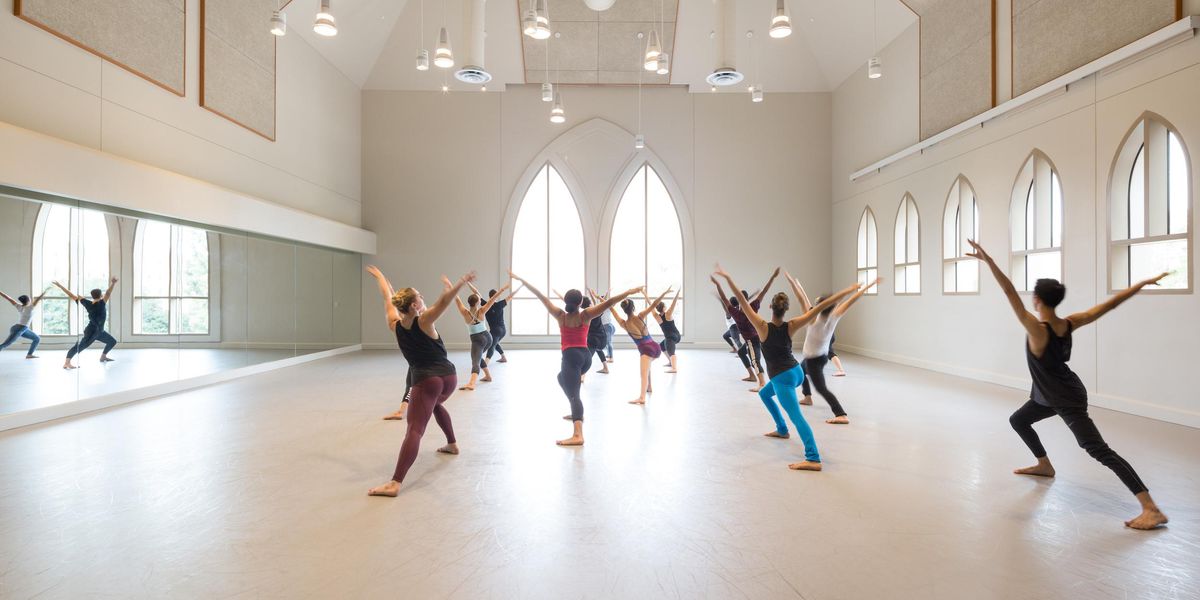Self-Produce to Self-Satisfy
The growing trend towards self-production allows artists to take the reins.
Jennifer Jancuska performing her own choreography in BC Beat. Photo by Travis Magee, courtesy Jancuska.
Breton Tyner-Bryan remembers the day she became dissatisfied with her longtime San Francisco gig. Despite respecting the dancers she
worked with, she thought, “I can’t walk down this hallway anymore,” she says. “But, if you’re complaining about the situation or you’re not seeing work you’re drawn to, throw your hat in the ring and do something yourself.”
So she did—and she’s not alone. In a perpetually under-funded dance landscape, dancers thirsty for artistic opportunities are pulling up their dance bootstraps and self-producing work on their own terms.
Start With Your Vision
Self-producers often find motivation in the power of taking charge of their career, manifesting new artistic experiences and creating opportunities for their communities. The essential quality of all self-producers? A hefty amount of gumption and perseverance. As Tyner-Bryan puts it: “Self-producing is fulfilling a vision from start to finish, wearing all hats—from choreographing and payment to location and technical elements.”
Your vision should be the starting point that leads to the specifics of your project. For Tyner-Bryan, this meant combining her contemporary ballet background with “cabaret, theater, darkness and jewels,” she says. “People aren’t really interested in producing that in dance festivals, so I ventured into the club world: It’s a golden opportunity to use my original stamp.” Over the summer she produced a show that blended a cabaret structure, live music and a focus on both musical theater dance and contemporary ballet at The Folly in New York City.
Broadway Connection co-founder Jennifer Jancuska found her vision when she moved to New York and was struck by her desire to “bring artists together to be their best, to follow their instincts and create,” she says. “I soon realized that a community of choreographers wanted a place to learn and explore together. I wondered, How do I develop that supportive environment?” BC Beat, a recurring mixed bill of narrative dance shown at the nightclub Cielo, was her answer.
Make It Happen
Logistics are the bedrock of self-producing, and finding a space you can afford, negotiating partnerships, creating a budget and looking at a timeline are essential for realizing your vision. Gather the best possible team to help you accomplish these tasks. “Picking people who are amazing at what they do is key,” says Tyner-Bryan.
Jessica Chen, founder of modern dance company J CHEN PROJECT, has used what she calls “levels of self-producing,” from working with institutions that co-present her work (covering technical and rehearsal costs) to mounting a full-length piece on her own. Participating in collaborations allowed her to build confidence and skills before tackling complete self-production.
Chen also takes a step-by-step approach to budgeting. First, create a projected budget including technical, costume, space, talent and team costs. Then, figure out what you can cut. This will inspire you to find other ways to make money. “Think about promo performances, sponsorships, master classes and grants,” Chen says. After the show, compare your prep budget to what actually was spent for future reference. Resources like Fractured Atlas, The Field and New York Live Arts can help self-producers learn about fundraising, fiscal sponsorship and other financial tools.
A cohesive marketing strategy is another priority. Start with a simple email to friends and family explaining your project. Send newsletters through programs like MailChimp and link social media channels like Facebook, Instagram and Twitter for a more streamlined outreach. Eventually, your strategy should become specific to your project. You may even include tie-ins to fundraising: “When we did a campaign for
Identity, the show we were putting up,” says Chen, “we created masks, and sponsors could pay $100 to receive one.”
Curtain Up on the Unexpected
The main challenge of self-producing is the element of unpredictability. For Jancuska, the lighting often changes at Cielo without notice, and she then has to reconsider technical cues. For Chen, it was an even bigger surprise: She planned a show at Dance New Amsterdam in 2013, and when the institution was facing inevitable closure, her show’s future was in jeopardy: “I jumped into gear to find a second option, emailing tons of places to find a plan B,” she says. “I made sure I had a solution—and that my dancers knew the special work we made would be performed.”
But the chance to create on your own terms is worth the risks. “As an artist, it’s essential to discover your own language,” says Jancuska. “You consider, What do I bring to the table? Then you can be clear when you offer that to others.”
DO
- Give your audience plenty of notice
- Follow up with crew, dancers, reviewers, audience and theater staff
- Seek out the best rates and locations for rehearsals
- Hire a stage manager
- Take hints from other press/marketing materials you receive
DON’T
- Use your personal email account; set up a separate account for your project to keep it professional
- Schedule a show on a holiday or citywide event
- Be afraid to approach those with similar projects/organizations for advice




